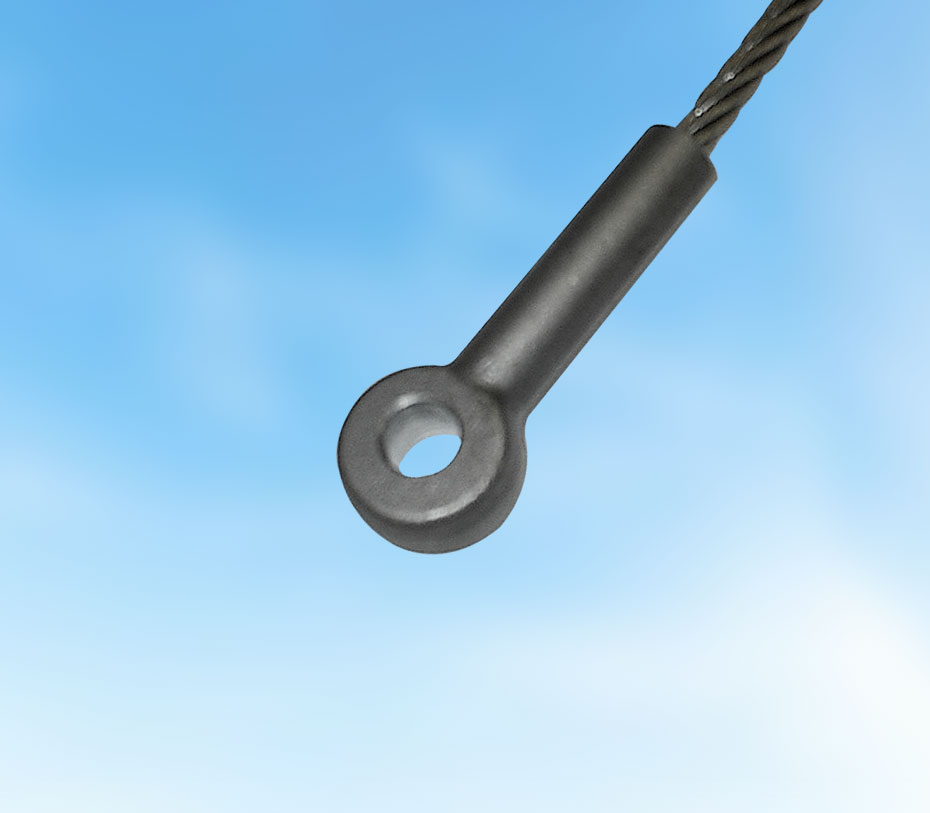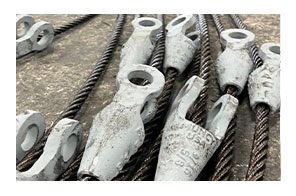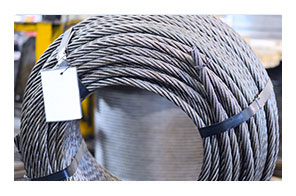What is a swage terminal?

Why use wire rope?
When lifting, holding up structures or pulling (like on winches) many applications use wire rope for its strength, durability and functionality. Wire rope is made up of individual steel wires that are arranged in strands and these strands are twisted around a steel core, giving wire rope its strength and flexibility and making wire rope a popular solution.
What is a wire rope termination?
To apply wire rope to any application, the cable needs to be connected to the lifting point and that which lifts (example: crane) or holds up. Wire rope are popularly terminated by swage fittings, including swaged sockets, button (ferrules), turnback sleeves (aluminum, copper, steel, stainless), Flemish eye sleeves, threaded studs, fork terminals, pin eyes, swaged shank hooks, ball shanks, to name a few. Speltered terminations are also popular, with spelter sockets (carbon and stainless steel) and speltered buttons. Wedge terminations are also popular, with wedge sockets and wedge button ferrules.
Swaged terminations define the assembly
The terminations substantially determine the strength, or safe working load limit, of the wire rope assembly. Wire rope has a rating, and typically the custom wire rope assembly’s terminations are the weakest point is the point of the assembly. The assembly are usually rated to the termination, whether swaged, speltered or wedge. How the assembly can connect to anything is determined by the termination. The pin diameter and fit are based on the fitting.
Note: this article is for informational purposes only. The reader should not rely on anything written herein and the author makes no warranties whatsoever.
Author: Muncy Industries
02/28/2024




